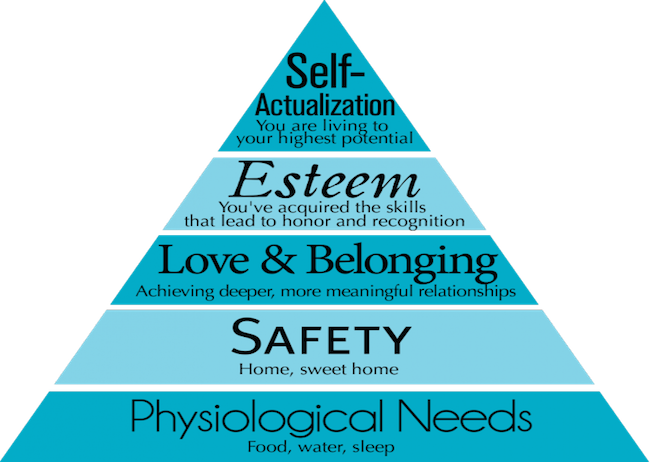Workplace Motivation with Needs-Based Theories
Motivation refers to an individual’s level of concern and approach to a task in hand. This approach could be positive or negative. At the workplace, there exist internal and external forces that affect employees and determine their behavior, sense of direction and effort.
This article explores the need-based theories of employee behavior at the workplace. Such needs must be met to motivate employees to take up the organizational goals as their own. They include;
Maslow’s Hierarchy of Needs
Motivation in workplace as outlined by Maslow argues that motivation stems from the fulfillment of basic needs such as safety, social interaction, physiological needs, self-esteem, and self-actualization.
Physiological needs relate to survival essentials such as food, air, water, and shelter. A good period of sleep and clothing also fall under this category. Security can be defined as either financial, personal or workplace. Under social needs, all human beings have the need to be loved and feel a sense of belonging. All these requirements must be satisfied and guaranteed by the employer to keep their staff in high spirits.
ERG Theories
Unlike the Maslow’s hierarchy of needs, Clayton Alderfer formulated the ERG theories and gave flexibility betweens the interlocking needs. The theory starts with existence needs composed of safety and physiological needs. It then groups social relationships and esteems under the relatedness needs. Here, individuals exhibit the need to interact with their peers, family, colleagues and co-workers.
The third category of growth needs covers self-actualization and internal esteem. Here, employees desire to increase their productivity and fulfill their potential.
David McClelland’s Need Theory
Need-based motivation can also be viewed from David’s perspective. He hypothesized three motivation needs that influence one’s disposition and that towards others. Authority motivation, for instance, makes individuals crave control, social and personal status. Team players value workplace and social relationships. They strive to build networks and work well in groups assisting their peers in the process. David classified them under affiliation motivation.
The third category labeled achievement motivation needs covers persons with high accountability standards and who continually seek responsibilities. These people are performers, and they set attainable yet challenging goals.
